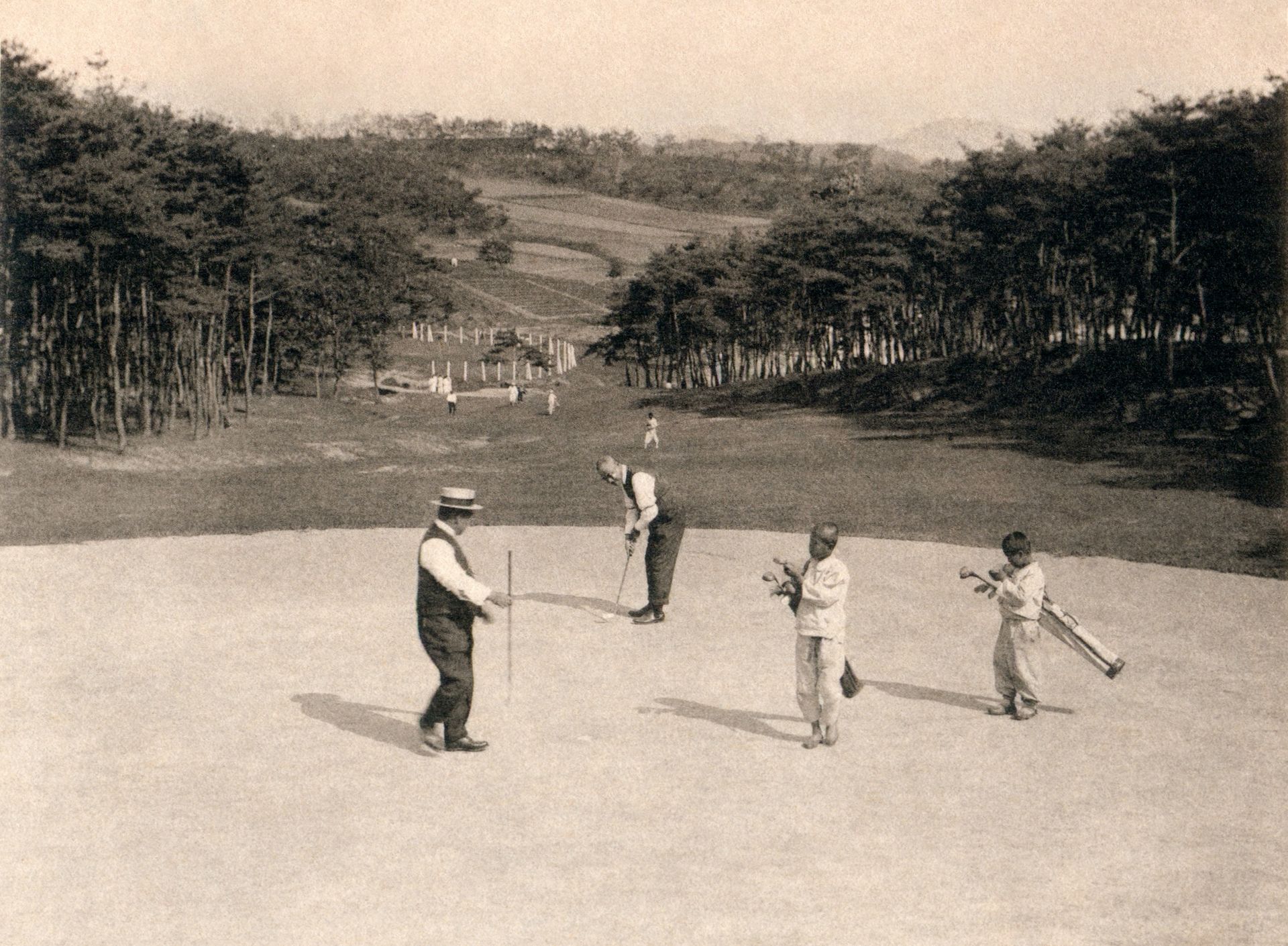- The Caddie's Playbook
- Posts
- 🇰🇷 The Rise of Korean Golf: From Local Passion to Global Influence
🇰🇷 The Rise of Korean Golf: From Local Passion to Global Influence

Your Insider Guide to Golf Travel in Asia
Good morning,
First off, it goes without saying, Scottie Scheffler is on top of the world. He’s the man every golfer is admiring right now (possibly with a touch of envy), and rightfully so. We haven’t seen dominance at this level since none other than Tiger Woods.
My focus this week is on the beautiful golf loving country that is South Korea. Everyone knows Koreans love golf in fact, so much so that South Korea boasts the third-largest golf market in the world, trailing only the U.S. and Japan. But this raises the question: how did they get here? This week, I’ll take a deep dive into South Korea’s golf journey and how a certain twenty-something-year-old once put the sport in the limelight. That moment, in part, explains why 1 in 10 South Koreans now play golf, a participation rate slightly higher than that of the U.S., where approximately 1 in 13 play.
In Today’s Email
📈 Started from the bottom now they are here
💎 The South Korean Gem
👨🏻⚖️ Government Support and Private Investment
💪🏻 South Korean Discipline and Work Ethic
⛳️ LPGA Dominance
🤑 Economic and Social Impact
⏳ The Future
😍 Nine Bridges Golf Course
This Week in Golf
Scottie strengthens his putting thanks to Phil Kenyon who also coaches the likes of Matthew Fitzpatrick, Tommy Fleetwood and Max Homa to name a few. This was visibly his massive improvement and the difference that led to his four shot victory.
It’s not all about golf - Scottie’s may have mastered golf but he can’t do it without balancing his 3 pillars which are family, faith and golf
Who is Phil Keyon? - The British putting coach who has put the finishes touches to Scottie Scheffler’s game and made him unstoppable
Happy Gilmore 2 - The Golf celebs were at the premiere for Happy Gilmore 2 It’s been nearly 30 years since since Happy first hit the big screen and it became a 90s classic
Our Fairway Feature: Lululemon

Roger Steele (Influencer) - Lululemon Golf Collection
Lululemon is a Canadian athletic apparel company founded in 1998 by Chip Wilson in Vancouver, British Columbia. Chip chose the name "Lululemon" partly because he noticed Japanese consumers were intrigued by brand names with the letter "L," which is hard to pronounce in Japanese. He joked that by including three "L"s, he could "get three times the money," making the name uniquely memorable and exotic to that market. They have recently quietly expanded into golf and are showing why they are a force to be reckoned with.
Check them out here: 👉 Lululemon
💎 From Fairways to Phenomenons: South Korea’s Golf Revolution
In the world of professional golf, few nations have undergone a transformation as remarkable as South Korea. Once an elite pastime for the wealthy, golf in South Korea has grown into a national obsession and a global powerhouse, reshaping the sport through cultural values, strategic investments, and individual brilliance. From its pristine courses on Jeju Island to bustling screen golf cafés in Seoul, South Korea has become a force that cannot be ignored on the international stage.
Started From the Bottom Now They Are Here - From Elite Hobby to National Passion

Hyochang Won - South Korea’s first golf course
Golf was introduced to Korea in the late 19th century by British expatriates, but for decades, it remained an exclusive sport for the wealthy. The first recorded course, Hyochang-Won, was built in the early 20th century, and during Japanese occupation, golf was symbolic of privilege, with little participation from Koreans.
Even through the 1980s and 1990s, golf was a domain of businessmen and elites, with steep membership fees and an exclusive culture. This began to change in the mid-1990s as South Korea’s rapid economic growth created a middle class with disposable income and leisure time. The emergence of screen golf facilities in the late 1990s made the sport accessible to everyday Koreans and broke down barriers that had kept golf out of reach for most.
Screen golf, a uniquely Korean innovation, allowed players to experience virtual rounds on famous courses for a fraction of the cost, democratizing the sport. By the early 2000s, golf participation rates surged, and the number of golf courses in the country more than doubled between 1998 and 2020.
The Se Ri Pak Effect: Inspiring a Nation (The South Korean Gem)

Se Ri Pak iconic shot at the 1998 U.S. Women's Open
South Korea’s golf revolution can be traced back to a pivotal moment: Se Ri Pak’s historic victory at the 1998 U.S. Women’s Open. Her dramatic playoff win, including a barefoot shot from a water hazard, inspired a nation still recovering from the Asian financial crisis. Pak, then a 20-year-old rookie, became a symbol of hope and determination.
Pak’s success ignited the “Se Ri Pak Effect,” inspiring a generation of young girls to pick up golf clubs. Dubbed the “Se Ri Kids,” this new wave of players would transform women’s golf. Within a decade, dozens of South Korean women joined the LPGA Tour, dominating tournaments and major championships. Players like Inbee Park, So Yeon Ryu, and Jiyai Shin have carried on Pak’s legacy, making South Korea the dominant force in women’s professional golf.
The inspiration wasn’t limited to players. Pak’s success brought unprecedented media attention to golf, leading to increased sponsorships, public interest, and investment in the sport’s infrastructure.
Building a Foundation: Government Support and Private Investment

Nine Bridges in Jeju - Top 100 Golf Course in the World
South Korea’s rise in golf didn’t happen by chance. Government policies and private investments played a significant role in growing the sport. Recognizing golf’s potential to boost tourism and the economy, the government incentivized course construction and promoted public access to golf facilities. Policies like offering loans to private clubs that opened their courses to the public expanded access to the sport.
Private investment also surged, with corporations pouring billions into building world-class courses, golf academies, and even technological innovations like screen golf. The result? South Korea spends an estimated $13 billion annually on golf-related activities, making it one of the largest golf markets globally.
A standout example of these investments is Nine Bridges Golf Club on Jeju Island. Ranked among the world’s top 100 courses, Nine Bridges showcases Korea’s commitment to excellence, with its stunning design, breathtaking volcanic landscape, and impeccable maintenance. The course has even hosted PGA Tour events, cementing its place on the global stage.
The Crucible of Champions: Training Systems and Discipline
South Korea’s ability to produce world-class golfers stems from its rigorous and unique training systems. Young players are molded through a disciplined approach that emphasizes hard work, precision, and mental toughness. Many golfers train in specialized academies, spending long hours perfecting their swings under the watchful eyes of coaches.
This meticulous focus on fundamentals ensures players develop consistent and reliable techniques. Korean golfers are also known for their mental resilience, cultivated through psychological conditioning and high-pressure simulations to prepare for competitive environments.
The intense competition within South Korea also fuels excellence. With limited spots available in professional ranks, young golfers are pushed to constantly improve, creating a pipeline of elite talent ready to compete on the global stage.
Dominance on the LPGA Tour
The most visible impact of South Korea’s golf revolution is the dominance of its female golfers on the LPGA Tour. Since Se Ri Pak’s breakthrough, Korean players have consistently excelled, winning major championships and holding world No. 1 rankings. Inbee Park, for example, is one of the most decorated golfers in history, with multiple major wins and an Olympic gold medal to her name.
The “Seoul Sisters,” as they’re affectionately called, bring a combination of technical skill, mental toughness, and relentless work ethic to every tournament. Beyond winning, they’ve elevated the professionalism of the LPGA Tour, inspiring players from other nations to raise their game.
A Growing Influence on the PGA Tour
While South Korea’s dominance in women’s golf is well-established, its male golfers are also making waves on the PGA Tour. Pioneered by K.J. Choi, who earned eight PGA Tour victories, Korean men are steadily gaining prominence.
Sungjae Im, known for his consistency and work ethic, has already achieved multiple PGA Tour wins and earned Rookie of the Year honors. Rising star Tom Kim has captivated fans with his youthful energy and fearless play, signaling a bright future for Korean men’s golf.
Beyond the Green: Economic and Social Impact
Golf in South Korea is more than a sport—it’s an economic powerhouse and cultural phenomenon. The country’s golf industry generates billions annually, spanning equipment manufacturing, apparel, and tourism. South Korea is also the world’s largest golf apparel market, influencing fashion trends globally.
Screen golf has become a major success story, democratizing access to the game and creating a thriving export industry. Companies like GolfZon have developed simulation systems that are used worldwide, cementing Korea as a leader in golf technology.
Socially, golf is a symbol of modernization and national pride. The success of Korean players on international tours has enhanced South Korea’s global image, showcasing its ability to excel in competitive arenas. Golf has also become a staple of Korean business culture and leisure, reflecting traditional values of discipline and perseverance.
The Future of Korean Golf
As South Korea continues to produce world-class players, its influence on global golf shows no signs of slowing. On the LPGA Tour, Korean women remain dominant, while male players are steadily gaining ground on the PGA Tour. The country’s robust infrastructure, innovative technology, and deep talent pool ensure its continued success.
Challenges remain, including sustaining its competitive edge as other nations invest in golf development. However, given South Korea’s proven ability to adapt and innovate, it’s well-positioned to remain a global leader in the sport.
To Conclude
South Korea’s rise in golf is a story of passion, discipline, and strategic vision. From Se Ri Pak’s inspiring victory to the dominance of the “Seoul Sisters” and the emergence of stars like Tom Kim, it’s a journey that continues to shape the global golf landscape. With its unique training systems, world-class infrastructure, and cultural dedication to excellence, South Korea has not only transformed its own golf scene but has also left an indelible mark on the sport worldwide.
Until next time
I hope you enjoyed this edition of The Caddie’s Playbook Please share the newsletter with your golf pals. A trip to South Korea is a must when it comes to golf. FYI they have insane golf apparel out there so I hear, that in itself is a worth a visit.
The Caddie